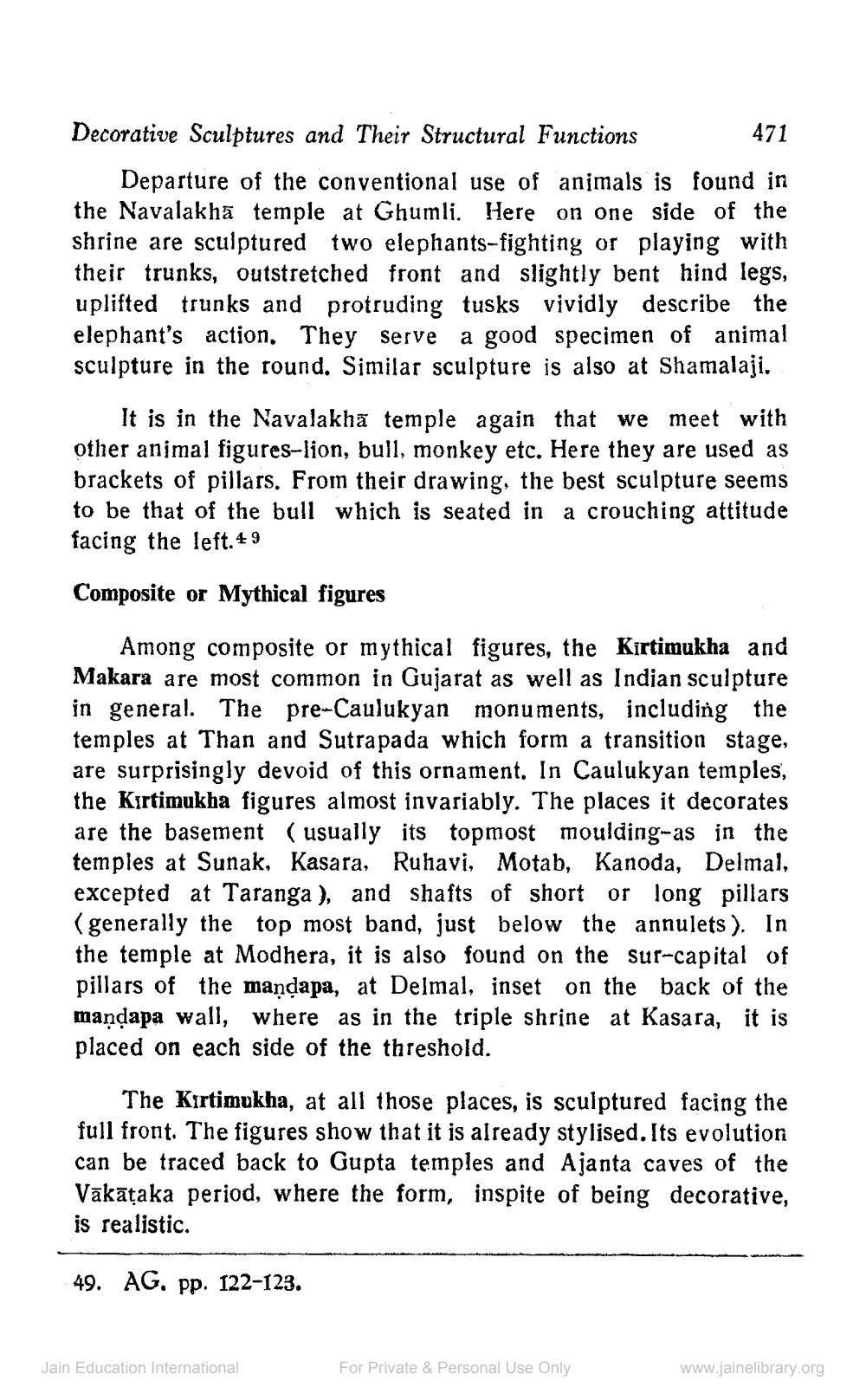________________
Decorative Sculptures and Their Structural Functions 471
Departure of the conventional use of animals is found in the Navalakhā temple at Ghumli. Here on one side of the shrine are sculptured two elephants-fighting or playing with their trunks, outstretched front and slightly bent hind legs, uplifted trunks and protruding tusks vividly describe the elephant's action. They serve a good specimen of animal sculpture in the round. Similar sculpture is also at Shamalaji.
It is in the Navalakhā temple again that we meet with other animal figures-lion, bull, monkey etc. Here they are used as brackets of pillars. From their drawing, the best sculpture seems to be that of the bull which is seated in a crouching attitude facing the left.49
Composite or Mythical figures
Among composite or mythical figures, the Kirtimukha and Makara are most common in Gujarat as well as Indian sculpture in general. The pre-Caulukyan monuments, including the temples at Than and Sutrapada which form a transition stage, are surprisingly devoid of this ornament. In Caulukyan temples, the Kirtimukha figures almost invariably. The places it decorates are the basement (usually its topmost moulding-as in the temples at Sunak, Kasara, Ruhavi, Motab, Kanoda, Delmal, excepted at Taranga ), and shafts of short or long pillars (generally the top most band, just below the annulets). In the temple at Modhera, it is also found on the sur-capital of pillars of the maņdapa, at Delmal, inset on the back of the mandapa wall, where as in the triple shrine at Kasara, it is placed on each side of the threshold.
The Kırtimukha, at all those places, is sculptured facing the full front. The figures show that it is already stylised. Its evolution can be traced back to Gupta temples and Ajanta caves of the Vākāțaka period, where the form, inspite of being decorative, is realistic.
49. AG, pp. 122-123.
Jain Education International
For Private & Personal Use Only
www.jainelibrary.org




